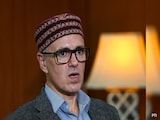On the night of November 10, Lok Nayak Jai Prakash (Narayan) Hospital's emergency and forensic teams braced for an onslaught they had never faced before.
"It felt like a moral war between good and bad doctors. On one side, we were trying to save lives, and on the other were these white-collar terrorists. Because of these doctors, even ordinary, well-intentioned doctors now risk being seen with a suspicious lens," a resident doctor said on condition of anonymity.
Last Monday evening, a white Hyundai i20 exploded at a parking lot near Red Fort, killing 13 people and injuring 20. The impact of the blast was so intense that several nearby vehicles were damaged. The area was immediately thrown into chaos as people scrambled to help the injured.
The blast occurred hours after eight people, including three doctors, were arrested and 2,900 kg of explosives seized with the uncovering of a "white collar" terror module involving the Jaish-e-Mohammed and Ansar Ghazwat-ul-Hind and spanning Kashmir, Haryana and Uttar Pradesh.
Also Read | Ammonium Nitrate Fuel Oil Found In Delhi Red Fort Blast. What Is It?
Ten people - including three doctors linked to the controversial Al Falah University in Faridabad - have been arrested so far.
Panic not only gripped the Capital but also the doctors at the hospital where the injured were rushed to. A second resident doctor described the hours that followed the blast as "unlike anything we had handled before". The scene inside the hospital, he said, was marked by both urgency and severe trauma.
By late evening, LNJP Hospital mobilised more than 50 doctors from multiple specialties, including plastic surgery, orthopaedics, general surgery and ophthalmology, for an overnight medical attention in operation theatres.
Another doctor, who had to return to the hospital despite completing his shift, said the scale and nature of injuries left even experienced teams shaken.
Also Read | In Propaganda Video, Pak-Based Terror Handler Praises Delhi Blast
"We are accustomed to seeing 50-60 patients a day, but this time, even handling 20-25 felt different," he said. He said what stood out was not just the number, but the nature of the injuries. Dismembered bodies, fractured skulls, severe burns and ruptured internal organs were reported.
To manage the chaos, the hospital staff immediately introduced a triage system - sorting out patients under Black (dead on arrival), Red (critical), and Green (minor injury) categories. This doctor recalled that around 10 bodies arrived with no signs of life and were sent straight to the mortuary, where the forensic department swung into action. "By 4am, we had completed eight to nine postmortems," he said.
The hospital admitted about 12 patients in the critical 'Red' category. Several of them had sustained severe burns, some extensive enough to require immediate surgery. Four were taken into the operating theatre without delay. One patient, with over nearly 70 per cent burns, did not survive. The doctor told NDTV that formalities like body claims are yet to be completed for some families. Meanwhile, another dozen or so patients with relatively minor injuries were stabilised.
Also Read | How This J&K Cleric Radicalised 4 Doctors, Started Red Fort Car Blast Plan
But beyond the physical injuries, the emotional burden weighed heavily on the hospital staff.
"The mental strain of handling such patients, their grieving families, and the bodies of those brought dead has been immense for us too," another doctor said.
He described a breakdown in normal protocol such as consent forms, paperwork, formal procedures, because in most cases family members had not arrived yet and when they did, they entered the hospital in panic, demanding answers, sometimes before formalities could be completed.
In coordination, the hospital's forensic team also worked through the night. Another resident doctor said he had returned home after a full day's shift and was preparing for dinner when an urgent call summoned him back.
Also Read | A Week After Delhi Red Fort Blast Killed 15, Chandni Chowk Limps Forward
"This was definitely not a normal incident," he told NDTV. He and three junior doctors, plus a faculty member and two other doctors, worked through the unsettling night and early hours to examine victims of the incident.
According to this doctor, the condition of the victims was severely critical.
"Many had multiple fractures, ruptured internal organs, shattered eardrums, fractured skull. Some bodies had foreign objects lodged inside them, and those brought dead were majorly burnt," he said, adding that he carried out five to six autopsies in a row, piecing together the body parts, meticulously noting every wound, every fracture, and ensuring the chain of custody was maintained as the remains were handed over to police and forensic teams.
After performing the postmortem at the hospital, he joined the forensic team at the crime scene. What he witnessed there was chilling. "I saw body parts strewn across the road - hands, legs, tissues, internal organs." Samples collected at the spot were later handed over to the National Investigation Agency and All India Institute of Medical Sciences, Delhi for DNA profiling.
For the medical teams at LNJP, the blast near Red Fort was not just another emergency, it was a test of endurance, professionalism, and compassion, played out in the most difficult of circumstances, while the city around them grappled with shock, grief, and a growing terror investigation.















